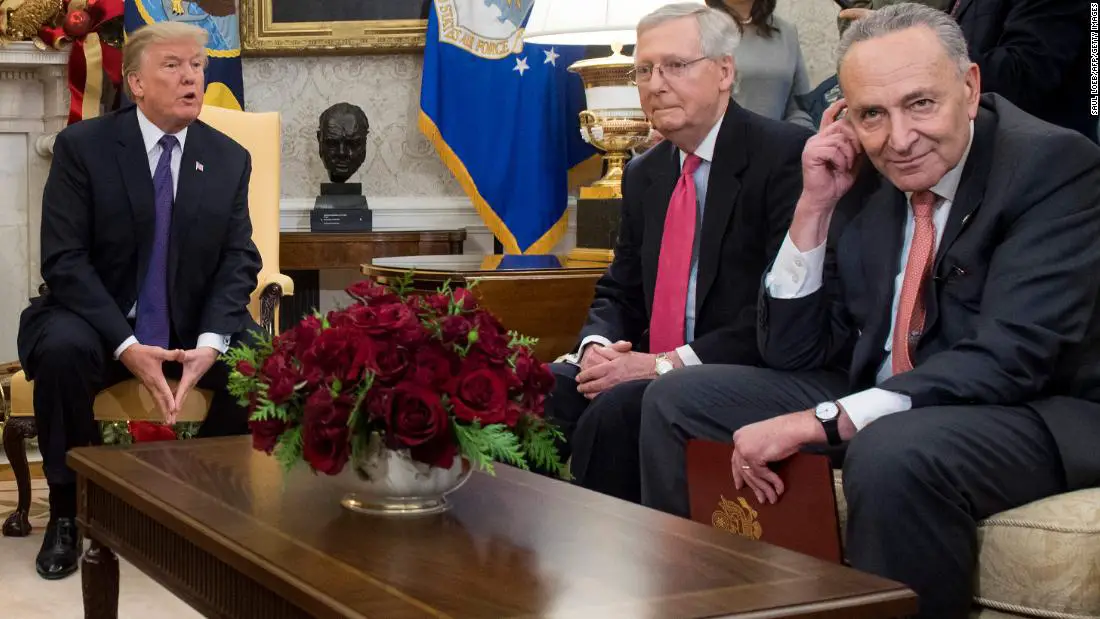Shutdown? What shutdown? Ahh, that’s right, we’ve forgotten already and it’s only Thursday. The short-lived shutdown used as an attempt by Democrats to extract some kind of fix for DACA Dreamers went basically nowhere, and now the public at large says it was unnecessary.
Quinnipiac has the numbers which indicate that voters do divvy up the blame between the President and the Democrats, but they also believe it was a waste of time:
The federal government shutdown was “mainly unnecessary” 84 percent of American voters say, as 13 percent say it was “mainly necessary,” according to a Quinnipiac University National Poll released today. Voters in every party, gender, education, age and racial group say overwhelmingly the shutdown was “mainly unnecessary.”
The shutdown hurt Democrats in Congress and President Donald Trump more than Republicans in Congress, the independent Quinnipiac (KWIN-uh-pe-ack) University Poll finds. Democrats are responsible, 32 percent of voters say, while 31 percent say President Trump is responsible and 18 percent point to Republicans. [Emphasis added]
Historically speaking, government shutdowns never go well for Republicans. The 2013 shutdown was a debacle by all accounts and the public soured quickly as Senator Ted Cruz attempted to force an ObamaCare repeal vote in the Senate by halting a spending bill. Despite mixed polling on ObamaCare, and a very unpopular mandate associated with it, the public was not ready to halt all government business on account of one program or pet-project.
Last week, Chuck Schumer and the Democratic Party learned a similar lesson to that of Senator Cruz. Despite positive polling for DACA/Dreamer protections, the public had no desire for the government to cease operations.
One gigantic caveat of the recent shutdown fix is that it only lasts for three weeks, then we get to revisit this, according to Business Insider:
Congress voted to reopen the government on Monday, ending the partial shutdown of federal services after just 69 hours. But in doing so, lawmakers set up another shutdown deadline just over two weeks away.
The two parties have just 15 days, until February 8, to resolve the differences over immigration, defense funding, and social programs that helped prompt the shutdown last weekend. And the chances of avoiding a second shutdown already look grim.
“A sequel seems likely given absolutely no policy resolution,” said Chris Krueger, an analyst at Cowen Washington Research Group.
Yes, that’s right, we’re in for another shutdown showdown in a few short days. Congress seems inept at averting these manufactured crises so the likelihood we once again reach the shutdown precipitous is high.
Democrats are hoping that this time around, the disagreement is between Republicans in the House, Senate, and the White House:
The key sticking point in the February shutdown negotiations won’t be formulating a bill that is acceptable to most senators. Rather, it will come in finding a deal that both the House of Representatives and the White House support.
The White House has already poured cold water on a bipartisan bill from GOP Sen. Lindsey Graham and Democratic Sen. Dick Durbin.
“The Graham-Durbin proposal is not a proposal the president can sign,” the White House deputy press secretary, Raj Shah, said.
The White House press secretary, Sarah Huckabee Sanders, reiterated the position Tuesday, saying the Graham-Durbin bill “should be declared dead on arrival.”
Getting agreement between the pro-amnesty (Lindsey Graham) and no-amnesty (Tom Cotton) factions within the GOP might be tougher than Trump negotiating with Schumer over DACA itself. Not to mention most any moderate bill that comes from the Senate might be rejected by Republicans in the House.
We haven’t even touched on the Democratic infighting as we noted yesterday.
Either way, get your popcorn ready for another episode of Governing on the Brink.
Donate Now to Support Election Central
- Help defend independent journalism
- Directly support this website and our efforts
